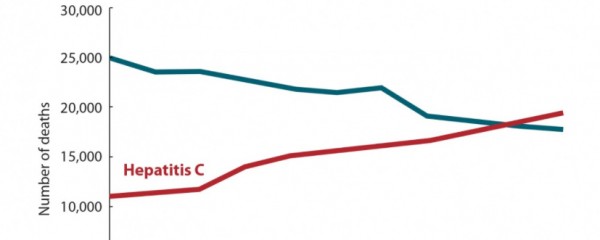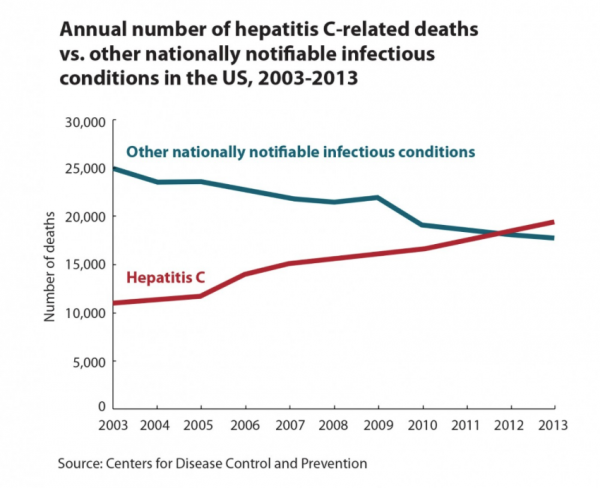Hep C News: Only heading in a new direction of treatment will help prevent deaths

Recent data released by the Centre for Disease Control and Prevention (CDC) showed that the deaths associated with hepatitis C reached an all-time high of 19,659 in 2014. Since 2013, the annual hepatitis C-related mortality surpassed the total combined number of deaths from 60 other infectious diseases. [1]
Although the effectiveness of the recently introduced hepatitis C antiviral treatment (DAA) is higher than previous drugs, this new treatment does not directly reduce liver damage nor improve liver health. [2] Together with the data released by CDC, it is suggested that the DAA treatments are not able to lower the number of deaths related to hepatitis C.
The only function of antiviral drugs is to eliminate the hepatitis virus in the human body, thus, to regain liver health, the liver must recover itself using its unique self-repairing ability. However using drugs actually causes further damage to the liver as the drug itself contains toxicity. A recent published paper has found that using DAA treatment might have an impact on the immune system as there is a sudden change of viral count, thus dramatically increasing the risk of liver cancer. [3] The number of related deaths caused by hepatitis C is continuously increasing; this is a clear indication that it is time to reconsider current treatment direction.
From the patients’ point of view, the primary objective of treatment should be to ensure normal liver function (ALT level), to reduce and prevent liver fibrosis, and to improve the quality of daily life. Only by successfully carrying out these objectives can one ensure long term liver health protection, reduce the likelihood of severe liver diseases and lower the risk of deaths caused by liver inflammation related diseases.

- Hepatitis C Kills More Americans than Any Other Infectious Disease (Centre of Diseases Control and Prevention) http://www.cdc.gov/media/releases/2016/p0504-hepc-mortality.html (Accessed: 2016-05-12)
- DAA Hepatitis C treatment http://www.who.int/hepatitis/news-events/hepatitis-c-guidelines-2016-story/en/ (Accessed: 2016-05-12)
- Liver Cancer Found in Hepatitis C Patients on New Antivirals http://www.medscape.com/viewarticle/862041 (Accessed: 2016-05-12)
- * All research and clinical data should be used as reference purposes only, results may vary.






